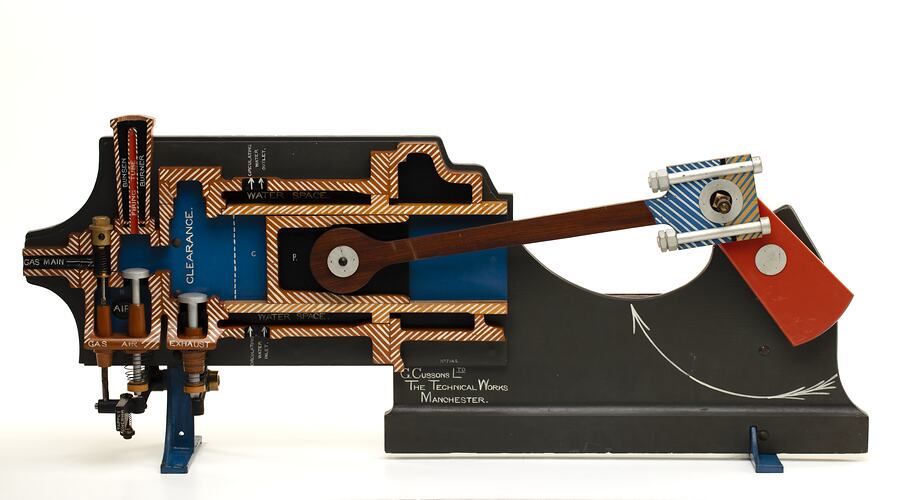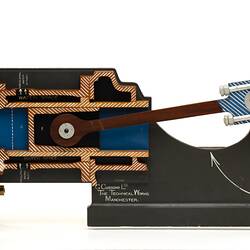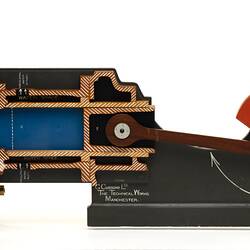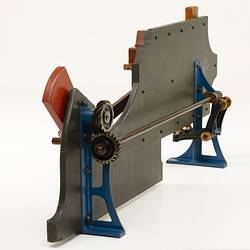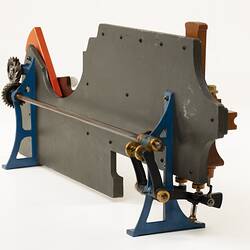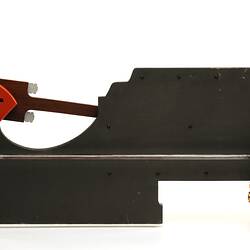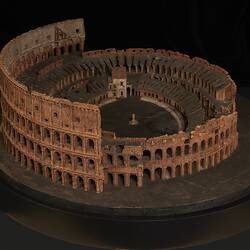Summary
This demonstration model represents an 1890s gas engine, showing the operation of a four-cycle (Beau de Rochas or Otto) internal combustion engine. It is not meant to represent a real engine, but to show how the internal working parts function together. The operation of this type of engine is shown by operating the crank by hand to move the piston through its simulated four-stroke cycle: intake, compression, power, exhaust.
The movement of the piston outwards draws in a mixture of air and gas into the cylinder chamber via poppet valves. On the inwards stroke, the piston compresses the air/gas mixture. The mixture is then ignited by the hot tube surface. The expanding gas produced by the ignited mixture provides the power to move the piston outwards again. On the return inwards stroke the combusted gases are exhausted and the cycle repeats again. Water is circulated around the cylinder to prevent it from overheating.
Jean-Joseph Etienne Lenoir developed the first internal combustion engine in 1859. He ignited coal gas by using a sparking ignition system, forming an expanding gas which pushed the piston on the power stroke. Some early engines used a sliding valve to expose the air-gas mixture to a flame for ignition. This model shows the 'hot tube' method of gas ignition, with the tube heated externally by a flame source, which was in more common use by the 1890s. This method was largely superceded by the 1910s, replaced by more reliable magnetos to provide the spark ignition.
Physical Description
Wood and metal cross section of a reciprocating piston engine mounted on a wooden board. All of the sections within the model have been labelled.
More Information
-
Collecting Areas
-
Modelmaker
-
Classification
Mechanical engineering, Internal combustion power, Model gas engines
-
Category
-
Discipline
-
Type of item
-
Overall Dimensions
1247 mm (Length), 167 mm (Width), 475 mm (Height), 15 kg (Weight)
-
Keywords
Internal Combustion Engines, Models & Modelmaking, Engineering Models
